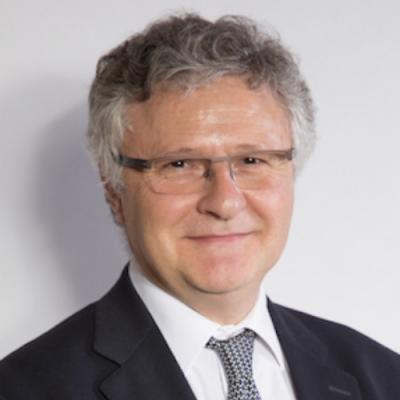François Picand, Scientific Director at TDF, and newly appointed Chairman of b<>com, shares his vision of a collaboration that has lasted for more than 10 years. What happens when an industry and academic researchers join forces over the long term to innovate together and differently?
On b<>com's 10th anniversary, TDF congratulated itself on being able - thanks to its b<>com membership - to work on multi-partner R&D projects as well as on projects of international scope. Is this the case today?
Absolutely! In 2022, TDF renewed its commitment to b<>com until 2027, in a context of perfectly aligning b<>com's technological axes with TDF's.
You were involved in the b<>com project from the very first discussions in 2010. After more than 10 years of existence, how do you look back on the b<>com adventure?
When it was created in May 2012, TDF took the "bold" gamble of investing in this brand new institute as a founding member for 10 years. This gamble taken by all its founding members has paid off, to the extent that b<>com is now cited as an example among the 8 Institutes of Research and Technology (IRT) selected by the French government at the time, both for the number and scope of its innovations, its international reputation acquired through its Intellectual Property, its published works as well as its presence at trade shows, and for its good management.
Tell us about your most memorable experience with b<>com?
It may sound a bit anecdotal, but I remember one of the first b<>com award ceremonies. That year, TDF had received 3 Awards for one of its PhD students, who had been seconded to b<>com to work on the design of signal processing methods and their hardware implementation. I was immensely proud that evening, and it confirmed that seconding PhD students to b<>com could indeed be a wise choice for an industrial company.

We make staff available in a high-tech environment and benefit from the leverage effect of the other members' contributions to the project.
What is the actual benefit of co-investing in an IRT such b<>com?
We provide staff in a high-tech environment and benefit from the leverage effect of the other members' contributions to the project. We also purchase R&D services which allow us to acquire innovations while benefiting from the Research Tax Credit (RTC). In addition, we share the results of projects conducted by b<>com, thereby enhancing the skills and know-how of our experts and engineers. Finally, we are interested in b<>com's results in terms of intellectual property, in proportion to our investment, via the b<>com licensing subsidiary.

We need to open up more to industrial partners to increase our impact while taking the time to discuss with them and current members to fully understand their expectations of us.
You have played an active role in the IRT's new roadmap. Can you tell us more about the "responsible digital" approach taken by the IRT?
b<>com adopted the “responsible digital” approach 2 years ago during the summer seminar traditionally attended by members of b<>com's Management Committee and Board of Directors. At the time, the idea was to initiate b<>com's CSR (Corporate Social Responsibility) approach by analyzing how we could contribute to achieving the UN's 17 SDGs (Sustainable Development Goals). The following year, b<>com built its medium and long-term plan, fully integrating "sustainable and responsible" principles and embracing the expectations of all stakeholders. This now puts b<>com in full command of its "Ambition 2035" plan! I am firmly convinced that including "responsible digital" in b<>com's projects will position us far ahead of other research institutes that have not yet made this shift.
What are the major challenges for the period ahead?
First and foremost, we need to deliver on our Roadmap to 2035. To do so, we need to do everything we can to create the company that will accelerate the development of Dome - a sovereign private 5G solution - and build its industrial and commercial success. We also need to embrace the technological changes that lie ahead by demonstrating great scientific ambition. Finally, we need to open up more to industrial partners in order to maximize our impact and ensure our long-term viability, but we also need to sit down and talk with them and our current members to fully understand what they expect from us.



